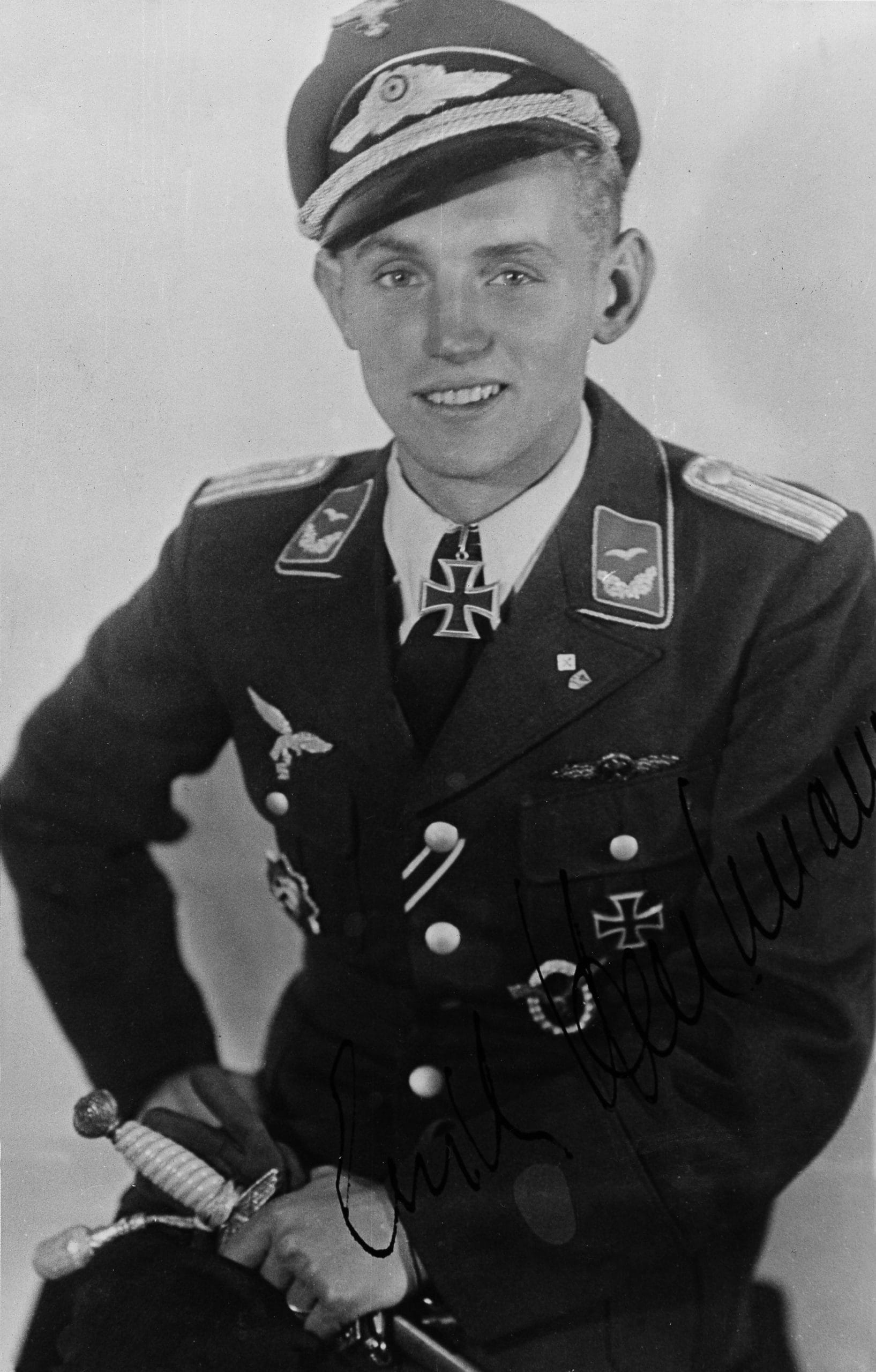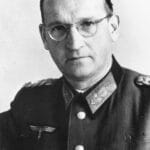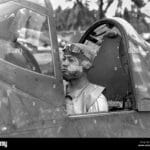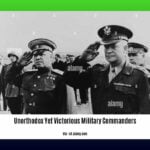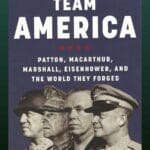Prepare to delve into the extraordinary life of Erich Alfred Hartmann, the Luftwaffe’s most successful fighter ace. With an astounding 352 confirmed victories in World War II, Hartmann’s accomplishments in aerial combat remain unmatched, solidifying his place as a legend in military history. However, his story extends far beyond mere numbers. This is a tale of courage, resilience, and the evolution of a man who, despite witnessing the horrors of war firsthand, ultimately emerged as a powerful advocate for peace. Join us as we explore the intricacies of Hartmann’s combat tactics, his significant contributions to the war effort, and the poignant chapters of his life both during and after the war.
A Life Forged in the Skies: From Glider Enthusiast to Luftwaffe Ace
Born in Weissach, Germany, on April 19, 1922, Erich Alfred Hartmann’s fascination with flight began at an early age. His mother, Elisabeth Wilhelmine Machtholf, was a glider pilot, and her passion for soaring through the air left an indelible mark on the young Hartmann. This early exposure ignited a spark that would shape his destiny. The family faced financial hardship during the Great Depression, likely instilling in Hartmann the resilience and resourcefulness that would serve him well in the challenges to come.
Hartmann’s journey toward becoming a Luftwaffe legend began in 1940 when he enlisted at the age of 18. It was within the ranks of Jagdgeschwader 52 (JG 52), primarily flying the Messerschmitt Bf 109, that he would etch his name into the annals of history. Deployed to the Eastern Front in October 1942, Hartmann found himself thrust into the crucible of intense aerial combat against Soviet forces. It was here that his exceptional abilities as a fighter pilot truly flourished.
Mastering the Art of Aerial Combat: The “See, Decide, Attack, Break” Philosophy
Unlike the stereotypical image of a reckless, guns-blazing fighter pilot, Hartmann’s success was deeply rooted in a calculated and analytical approach to aerial combat. He understood that victory in the sky demanded more than just raw courage; it required a keen eye, unwavering patience, and the ability to make split-second decisions under immense pressure. His mantra, “See, Decide, Attack, Break,” encapsulated this philosophy perfectly.
Hartmann’s approach was predatory in nature, prioritizing observation and situational awareness above all else. He would often spend extended periods studying enemy formations, patiently waiting for the opportune moment to strike. This allowed him to identify weaknesses in enemy defenses, exploit advantageous positions, and execute swift, decisive attacks that maximized his chances of success while minimizing risk.
This calculated aggression, coupled with his innate talent for aerial gunnery, proved devastatingly effective. Over 1,404 combat missions and 825 aerial engagements, primarily against Soviet aircraft on the Eastern Front, Hartmann amassed an unprecedented 352 confirmed victories. His ability to maintain a cool head amidst the chaos of aerial combat, to analyze, adapt, and strike with precision, set him apart as one of the most formidable fighter pilots the world had ever seen.
If you’re interested in learning more about the thrilling life of Arctic explorer, ethnographer, and author Peter Freuchen, you can delve into his fascinating story by clicking on Freuchen.
Beyond Victory: A Prisoner of War’s Resilience and the Path to Peace
Hartmann’s wartime exploits came to an end with the fall of the Third Reich in 1945. Captured by Soviet forces, he was thrust into a new and harrowing chapter of his life – ten years of captivity in various Soviet prison camps.
Conditions in these camps were brutal. Hartmann endured solitary confinement, meager rations, and back-breaking forced labor. The psychological toll was equally severe, as he faced relentless interrogation and attempts to coerce false confessions of war crimes. Throughout this ordeal, however, Hartmann’s spirit remained unbroken. He refused to betray his comrades or his country, clinging to his principles and enduring years of physical and mental hardship.
Released in 1955, Hartmann returned to a world forever changed by war. Germany was divided, and the scars of conflict ran deep. Undeterred, he rebuilt his life, joining the newly established West German Air Force (Bundesluftwaffe) and sharing his invaluable experience as a flight instructor.
The horrors of war had left an indelible mark on Hartmann, shaping his worldview and fostering within him a profound commitment to peace. He became a vocal critic of war and its glorification, using his platform to advocate for understanding, reconciliation, and the pursuit of peaceful solutions to international conflict. “Never hate,” he wrote in his autobiography, The Hunter. “It only eats you alive.” These words reflected the transformative power of his experiences and the wisdom he sought to impart on future generations.
Erich Hartmann’s Enduring Legacy: A Paragon of Skill, Resilience, and the Complexities of War
Erich Hartmann’s legacy extends far beyond his impressive kill count. While his achievements as a fighter pilot remain unparalleled, his story serves as a testament to resilience, adaptability, and the enduring impact of individual skill in the face of overwhelming odds.
Hartmann’s tactical brilliance, epitomized by his “See, Decide, Attack, Break” philosophy, continues to be studied by military strategists and pilots today. His emphasis on situational awareness, calculated decision-making, and the ability to exploit fleeting opportunities in the dynamic realm of air combat remain as relevant as ever in the 21st century.
However, perhaps the most profound aspect of Hartmann’s legacy lies in his post-war transformation. From a decorated ace, he evolved into a staunch advocate for peace, demonstrating the capacity for growth, introspection, and the rejection of violence that can emerge even from the depths of conflict. Erich Hartmann’s story reminds us that true strength lies not only in achieving victory, but also in learning from the past, striving for reconciliation, and dedicating ourselves to building a more peaceful future.
Exploring the Untold: Unraveling the Enigma of Erich Hartmann
Despite extensive research and documentation, Erich Hartmann’s life and career continue to captivate historians and military enthusiasts alike. There are still areas of his story that remain open to exploration and invite further analysis.
One intriguing aspect is the psychological impact of achieving such a high kill count. How did Hartmann reconcile his undeniable success with the inherent loss of life that accompanies aerial combat? Did he experience survivor’s guilt or grapple with the moral complexities of his actions? Further research into his personal letters, diaries, and interviews with those who knew him best might shed light on the internal struggles he may have faced.
Additionally, examining how Hartmann’s tactics evolved throughout the war could provide valuable insight into his adaptability and tactical genius. Did his strategies change in response to new aircraft technologies, evolving enemy tactics, or the shifting tides of the Eastern Front? Comparing his early engagements with those later in the war, analyzing his decision-making processes, and considering the influence of his wingmen and commanding officers could reveal a nuanced understanding of his development as a fighter pilot.
Finally, acknowledging the ongoing debates surrounding the verification of aerial victories in World War II is crucial. While Hartmann’s 352 confirmed kills are widely accepted, it is important to approach such figures with a degree of historical awareness. Exploring the methodologies used to confirm kills, the potential for exaggeration or error, and the challenges of achieving absolute accuracy in the chaos of aerial combat can provide a more nuanced understanding of his record.
By continuing to research, analyze, and engage in thoughtful discussion, we can ensure that Erich Hartmann’s legacy remains vibrant, multifaceted, and a source of both inspiration and cautionary wisdom for generations to come.
- Unlock Black Pepper’s Secrets: A Complete Guide - April 26, 2025
- Discover Long Black Pepper: Flavor & Health Benefits - April 25, 2025
- Shocking Twists: The Grownup Review: Unreliable Narration - April 25, 2025
